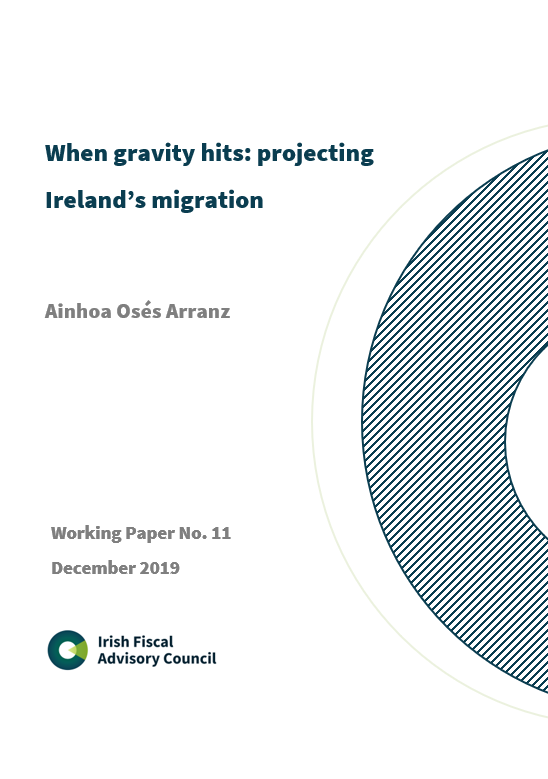This paper projects Ireland’s migration flows up to 2050 based on new data on international migration and novel econometric techniques in the context of migration modelling.[1]
Why do migration projections matter?
Understanding migration flows is important for well-founded fiscal policy, given its potential links to revenue growth and expenditure plans. Migration is typically the most challenging demographic component to forecast and the main source of error in population projections. This is especially the case in Ireland, a small open economy where migration flows are particularly volatile and have proven to follow very marked procyclical trends over the last number of years.
How are they modelled in this paper?
We estimate migration flows based on so-called “gravity models”. In their simplest form, these models assume that migration flows between two countries are positively correlated with the stock of co-nationals already residing in the country, and negatively correlated with distance. Based on data for 232 countries since 1960, we explain migration using fundamentals like demographics, economic growth and other time-invariant features of countries. The model is estimated through Poisson Pseudo Maximum Likelihood (PPML), a novel econometric technique in the context of gravity models of migration that allows us to overcome potential biases that Ordinary Least Squares (OLS) might entail when applied to this type of data.
What do the results show?
On the estimation side, our findings are broadly in line with international literature, suggesting that our model can be an important tool for forecasting future migration in Ireland. Unlike other papers, we find that economic growth in home countries does not help explain migration flows. What matters is the destination country’s growth. In terms of the projection exercise, our model projects that the long-term migration dynamics of Ireland will be positive over almost the whole projection horizon largely on the basis of a relatively favourable productivity growth. The projections suggest that net inflows will amount to 14,000 by 2030, and will then slightly trend down to 12,500 by 2040, before being close to zero by 2050. More broadly, annual net migration flows will average to over 9,000 over the medium to long term, close to the observed long-term average. This paper also shows that shocks to Irish growth can have significant impacts on the inflow of net migration in Ireland.

